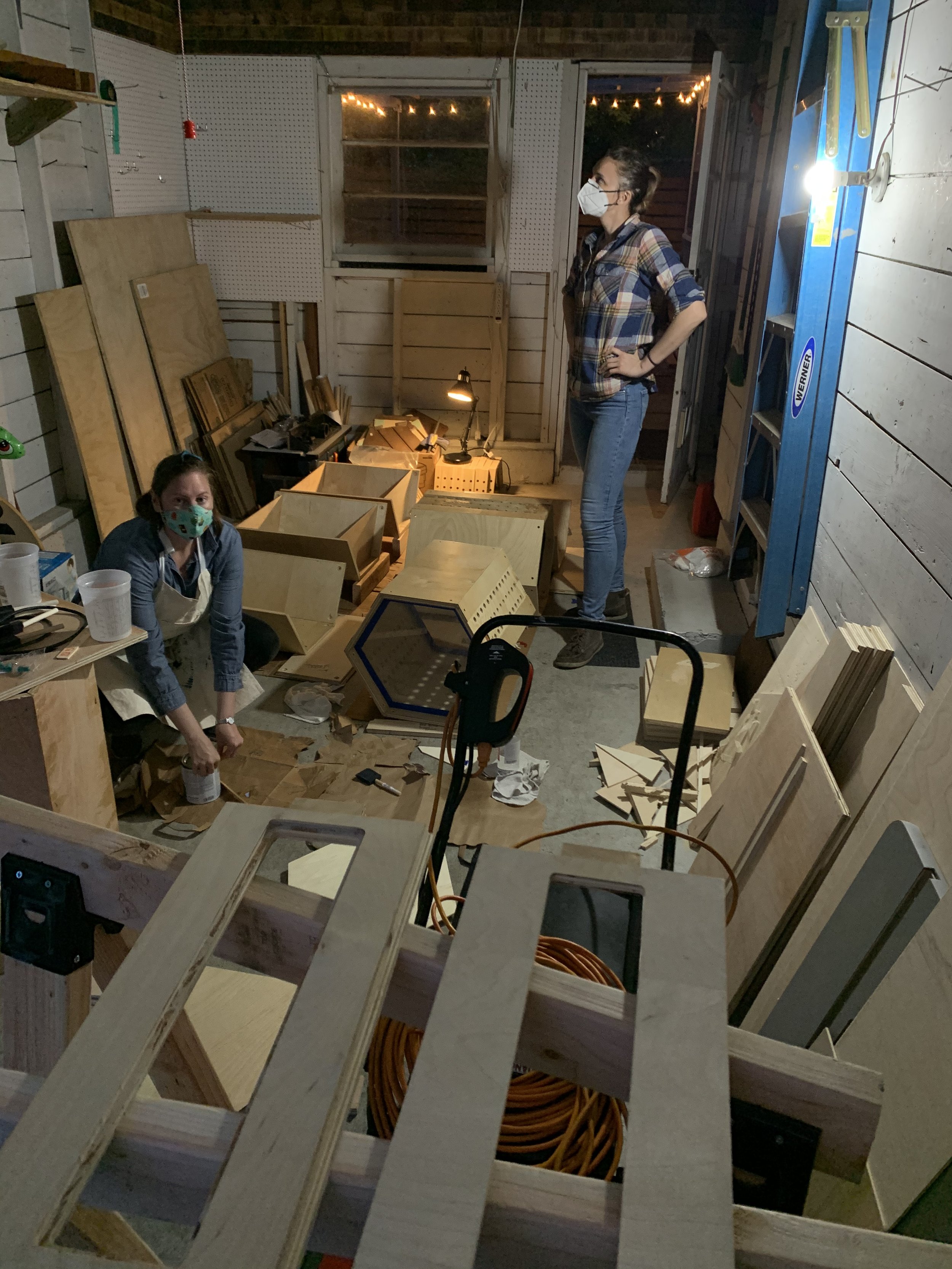A Multi-Functional Beehive
Building a hive that supports native bees, honeybees, and beekeepers
Team
Graduate Class Project
Year
2020
My Role
Research, concepting, design and illustration, and project management and execution of final project deliverable
Project
As part of the graduate design studio, we partnered with a local skincare and botanicals company, Blendily, to gain experience collaborating with clients and working through the design processes over a semester-long project. Blendily’s organic and hyper-local ingredients are core to the line of products created by founder Ivy Chung. The goal was to design a backyard beehive for her property to supply familiar bee products such as honey and beeswax, as well as niche products like pollen, propolis, and royal jelly.
We designed a new modular backyard beekeeping system to balance the needs of the Pacific Northwest backyard beekeeper as well as the needs of honey bees, native bees, and the urban garden environment. The Bee & Bee PDX was a finalist in Fast Company’s World Changing Ideas Awards.
We created the Bee & Bee - a modular bee habitat and garden system. Four module designs allow for flexible hive configurations to support the health of the bees, the goals of the beekeeper, and the vitality of the local ecosystem.
The Bee & Bee was delivered with a comprehensive user guide providing detailed specs of the hive and steps for inspecting and harvesting honey. The user guide also served as an introduction to beekeeping best practices, providing illustrations and visual aids to learn about honeybee behavior and hive management.
The Hive & More
Bees have unique access to attached modules which allows beekeepers to guide bees to specific modules during hive inspections, reducing the stress and disruption of bees and a safer beekeeping experience.
Bee-first modules are a bee-only space, designed to let bees follow their natural comb-building tendencies undisturbed by humans.
Honey-hive modules provide structure for bees to follow, building a uniform comb that is easily harvestable. Frames are nestled into the drawer designed to eliminate labor-intensive opening procedures. Clear drawer panels provide disruption-free inspections.
Open-modules can serve as a planter, water container, or additional storage.
Native-modules designate space to house other important pollinators.
The hive needed to deliver an improved urban beekeeper experience for maintaining the hive and harvesting bee products, giving special attention to size, weight, and height considerations for female beekeepers.
How We Got There: Research
Set out to find room for innovation on a technology that hasn’t been substantially improved in over a century, the Bee Lab research approach had two primary areas of focus: bees and beehives. Understanding the complexities of bee health and behavior was crucial to designing a home where they could thrive.
The team spent weeks diving into scientific papers, online discussion forums, educational videos, beekeeping manuals, and how-to guides in parallel with interviews with bee experts, commercial and backyard beekeepers, an entomologist, and hands-on interactions with bees.
Understanding the fundamentals of how bees and hives function was crucial, as the project's success hinges on the bees thriving. These essential insights were shared through a mid-project poster and presentation, and later incorporated into the final Bee & Bee user guide.
Ideation & Iteration
We moved to a digital collaborative space mid-March during Covid-19 where we improvised new methods of collaboration, adapted a variety of brainstorming techniques, and found creative solutions to moving the project forward.
We created a variety of low-fidelity hive prototypes to incorporate the design criteria different angles, assessed constraints, worked toward viable solutions, and refined the concept for the full-scale prototype.
At the conclusion of the spring semester, myself and classmate Sam Caruthers-Knight elected to build the prototype on behalf of the class. Over the summer, we teamed up with our instructor Skye Moret and Industrial Designer Garrett Dobbs to bring the concept to life. It was an ambitious endeavor, and we were proud of what we accomplished!
Fabrication
To bring our concept to life, we were resourceful and persistent in finding alternative ways to deliver a working prototype. We were able to collaborate with an industrial designer to flush out engineering challenges, hone mechanics, and transform our mockups into detailed blueprints which we used to discuss fabrication logistics with local studios, facilities, and craftsmen.
In doing so, we connected with a skilled woodworker who built several intricate components of the hive and offered many tips and insights for this phase of the project. We also coordinated with staff to access the Make Think Code lab, where we laser cut several detailed pieces for the prototype. The team carried on building the beehive over an intensive week working together in a Covid-save area, followed by delivery and final assembly in our client’s space.










